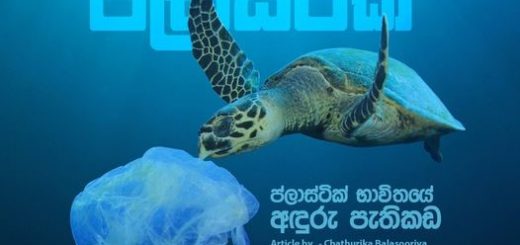“Impact of Microplastics on Aquatic Fauna “
Microplastics directly pose a great threat to marine organisms and also indirectly affect the ecosystem by adsorbing other marine pollutants. Due to its large area to volume ratio, microplastics are readily absorbing hydrophobic pollutants from the aquatic system. These tiny plastic fragments are persistent in the marine ecosystem and due to their micron sized particle nature, these fragments are mistaken as food and ingested by a range of marine biota which includes corals, phytoplanktons, zooplanktons, sea urchins, lobsters, fish etc. and ultimately get transferred to higher tropic level. The impact of microplastic on marine biota is an issue of concern as it leads to the entanglement and ingestion which can be lethal to marine life. Coastal ecosystems which comprise of coral reefs are in great threat due to microplastic pollution.
Corals survive in a symbiotic association with single celled algae which is present in the tissues of corals cavity. Also, corals obtain energy by feeding on planktons to acquire important nutrients which are essential for their growth, development and reproduction. The ‘microplastic feeding’ mechanism of corals involves ingestion, retention of plastic fragments and digestion. The harmful effect of microplastics on corals involves retention of plastic fragments in mesenterial tissue which leads to reduction in feeding capability and lowering in energy reserves. The microbial biofilms associated with microplastics may also negatively regulate coral reef by promoting pathogen transmission.
Certain features of microplastics such as size, attractive colors and their high buoyancy make these tiny fragments easily available for fish. Fish ingest microplastics by mistaking these fragments as planktons or other natural prey. In a study, the microplastic ingestion was found in the planktivorous fish Acanthochromis polyacanthus where microplastics of the dimensions < 300 μm were present in the gut cavity of individual fish. In one of the experiments, ingestion of microplastics by fish showed that exposure of these plastic fragments causes histopathological modifications in the intestine, resulting in the detachment of mucosa epithelial lining from the lamino propia and causing its widening, reduction and puffing of villi, increase in number of globet cells and certain alterations in the normal structure of serosa of fish.
The effect of polystyrene on a European fish (Perca fluviatilis) was studied in which eggs and larvae of Perca fluviatilis were exposed to different concentration levels of microplastics found in the Swedish coast, namely 10,000 particles per m3 and 80,000 particles per m3. It was found that eggs which were exposed to high concentration of microplastics had a comparative slower hatching rate when compared to control. Also, the larvae exposed to microplastics were smaller and slower in comparison to normal larvae. The responsive ability of microplastics exposed Perca fluviatilis larvae to the chemical alarm (existence of predator) was found to be very low and thus it has a deleterious effect on the survival rate of fish. Another study also showed that microplastic ingestion in fishes causes metabolic alterations which include up-regulation and down-regulation of fatty acids and amino acids respectively. The ingestion of micro and nano plastics causes alteration in the ratio of triglycerides and cholesterol in the blood serum level of fish and causes variation in the delivery of cholesterol between muscle and liver of fish.
References:
https://setac.onlinelibrary.wiley.com/doi/10.1002/etc.4268
https://journals.openedition.org/factsreports/5257



